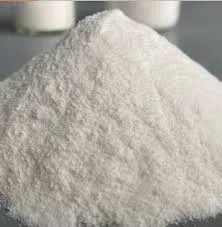
ຕ.ລ. . 22, 2024 13:28 Back to list
Is HPMC Safe for Consumption and Use in Various Applications?
Is HPMC Safe? Understanding the Use and Safety of Hydroxypropyl Methylcellulose
Hydroxypropyl methylcellulose (HPMC) is a widely used compound in various industries, notably in pharmaceuticals, food, and construction. As consumers and manufacturers increasingly seek products that are safe and effective, the question of whether HPMC is safe for use becomes paramount. This article aims to provide a comprehensive overview of HPMC, its uses, potential risks, and safety evaluations.
What is HPMC?
HPMC is a semi-synthetic polymer derived from cellulose, a natural polymer found in plant cell walls. It is a white, odorless powder that is soluble in cold water, forming a gel-like consistency. HPMC's unique properties, including its ability to retain moisture, form films, and act as a thickener, make it a versatile ingredient in numerous applications.
Uses of HPMC
1. Pharmaceuticals HPMC is frequently used as a binder, coating agent, and controlled-release agent in tablet formulations. Its ability to provide a sustained release of active ingredients can enhance the efficacy of medications while minimizing side effects.
2. Food Products In the food industry, HPMC acts as a food additive, particularly in gluten-free products, where it helps improve texture and retain moisture. It's often found in salad dressings, sauces, and bakery items, providing stability and a pleasing mouthfeel.
3. Cosmetics and Personal Care HPMC is used in various cosmetic products for its emulsifying and thickening properties. It helps improve the texture and stability of creams, lotions, and gels.
is hpmc safe

4. Construction In the construction industry, HPMC is used as an additive in cement and other building materials to improve workability and water retention.
Evaluating the Safety of HPMC
The safety of HPMC has been evaluated by various health and regulatory organizations. According to the World Health Organization (WHO) and the Food and Drug Administration (FDA), HPMC is Generally Recognized as Safe (GRAS) when used in accordance with established guidelines. The compound has undergone extensive studies to assess its toxicological profile, and the results have indicated that HPMC poses minimal risk to human health.
1. Oral Consumption Studies have shown that HPMC is non-toxic when ingested in food products. It is not metabolized by the body, which means it passes through the digestive system without being absorbed. This characteristic further supports its safety when used in food applications.
2. Pharmaceutical Use In pharmaceuticals, HPMC has a long history of safe use. It is well-tolerated by patients and does not produce significant side effects. Its use as a controlled-release agent is also supported by research demonstrating its effectiveness in providing consistent drug delivery.
3. Dermal Absorption When applied topically in cosmetics and personal care products, HPMC has been evaluated for skin irritation and sensitization potential. The results indicate that it is safe for most individuals; however, as with any substance, some individuals may experience allergic reactions or sensitivities.
Conclusion
In summary, hydroxypropyl methylcellulose (HPMC) is a versatile compound used across various industries, and its safety has been extensively evaluated. Regulatory agencies such as the WHO and FDA endorse its use as safe in food and pharmaceutical applications. While HPMC is generally well-tolerated, consumers should remain aware of any personal sensitivities or allergies when using products containing this compound. Overall, HPMC continues to be recognized as a safe and valuable ingredient that enhances the quality and efficacy of a variety of products in our daily lives.
-
Versatile Hpmc Uses in Different Industries
NewsJun.19,2025
-
Redispersible Powder's Role in Enhancing Durability of Construction Products
NewsJun.19,2025
-
Hydroxyethyl Cellulose Applications Driving Green Industrial Processes
NewsJun.19,2025
-
Exploring Different Redispersible Polymer Powder
NewsJun.19,2025
-
Choosing the Right Mortar Bonding Agent
NewsJun.19,2025
-
Applications and Significance of China Hpmc in Modern Industries
NewsJun.19,2025







